Transparent LED Screen
Transparent LED Screen: Innovative display technology that combines high transparency with exceptional visual quality. Whether you need it for commercial displays, retail stores, or exhibition halls, the TRANSPARENT LED DISPLAY offers a lightweight design and easy installation, ensuring an unparalleled viewing experience. Its unique features make it perfect for a wide range of applications, from advertising to information dissemination. Discover the future of display technology with our TRANSPARENT LED SCREEN today!
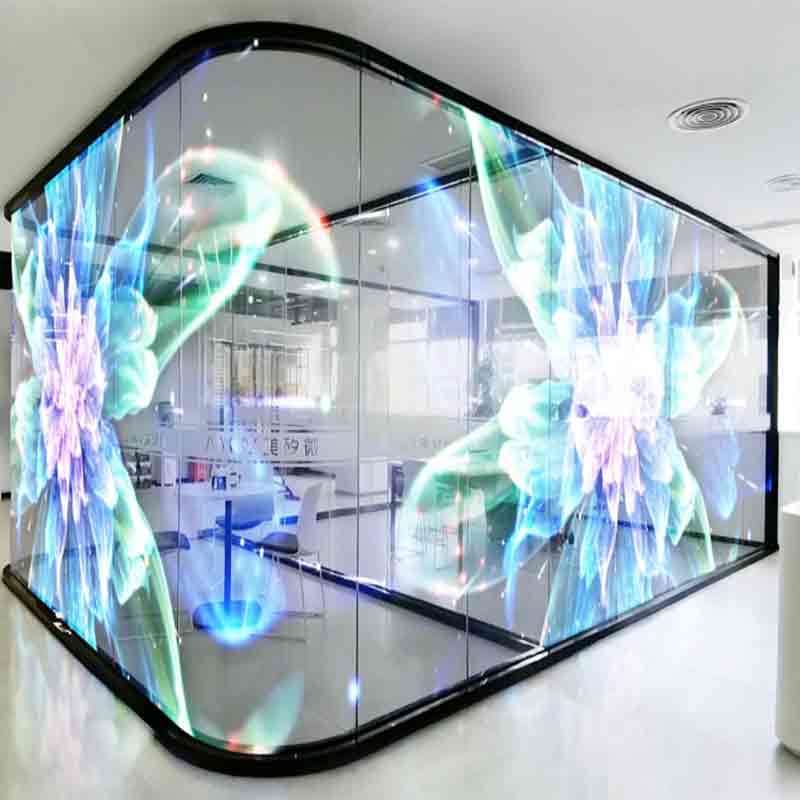
TIF Series
Overall Rating: 4/5
High Transparency LED Displays
Transparent LED Screen uses advanced LED technology for see-through displays in digital signage, retail, and exhibitions. Reissopto offers high-quality, high-transparency solutions.
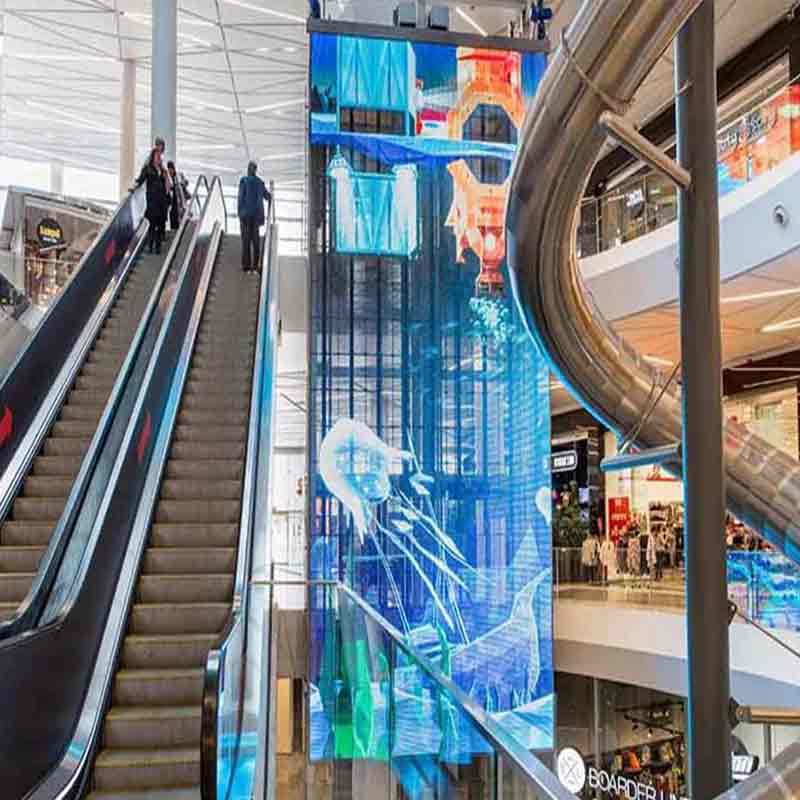
TIT Series
Overall Rating: 4/5
Advanced Transparent LED Screens
Shape Transparent LED Screen technology delivers 85% transparency with customizable designs for 2024 installations. Reissopto offers high-quality, high-transparency solutions.
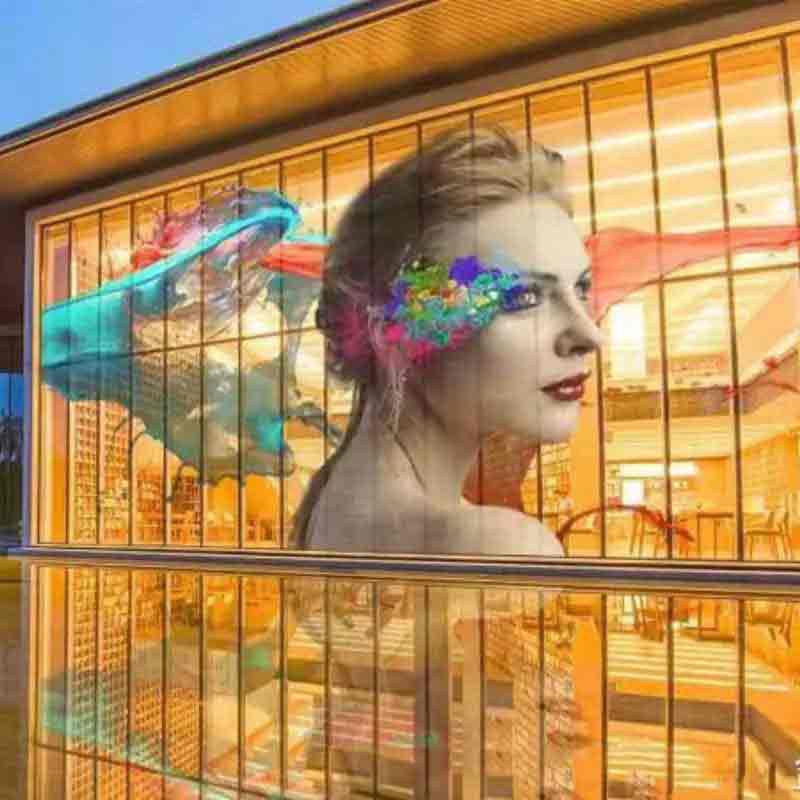
RTF Series
Overall Rating: 5/5
High-Transparency Glass LED Screens
Transparent glass LED screens are gaining widespread popularity across multiple applications, particularly in stage setups. Reissopto delivers high-quality, high-transparency solutions.
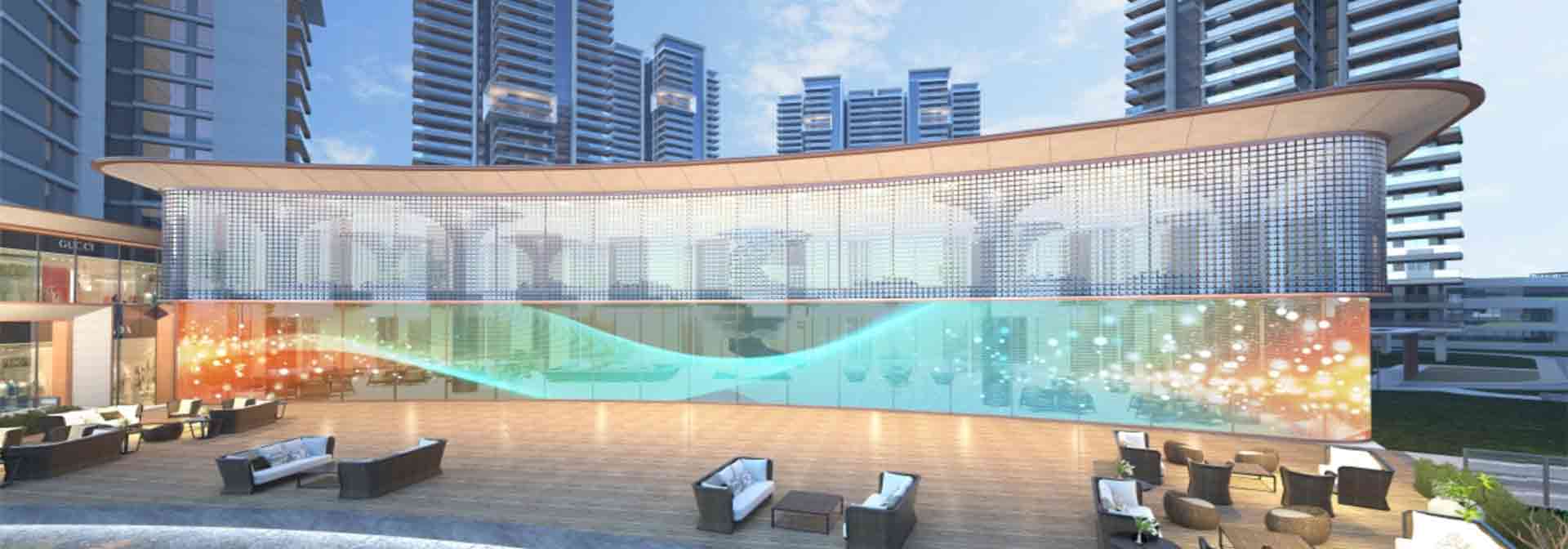
Introduction to Transparent LED Screen
Transparent LED Screen technology represents a significant advancement in display solutions, combining high transparency with exceptional visual quality. Unlike traditional LED screens, which are opaque and block the view behind them, transparent LED screens allow light to pass through, creating a see-through effect. This innovative technology is ideal for mounting on glass walls in various settings such as retail stores, shopping malls, office buildings, and more. The screens can be customized to fit specific glass dimensions, making them a versatile and flexible solution for a wide range of applications.
Overview of Transparent LED Screen
A Transparent LED Screen is a display technology that uses micro-innovations in LED light bar screens, SMD manufacturing processes, and LED control systems. These screens are designed to maximize the perspective effect and reduce structural components that might block the line of sight. They are known for their high permeability, ultra-light characteristics, and energy efficiency. Leading manufacturers like Reissopto offer advanced production lines and professional staff to ensure the highest quality and reliability.
Application Scenarios
Transparent LED screens are widely used in various applications:
- Retail Stores: Display dynamic advertisements while maintaining the visibility of the store's interior.
- Shopping Malls: Enhance the visual appeal of common areas with real-time information and promotions.
- Office Buildings: Use for digital signage and brand promotion in lobbies and meeting rooms.
- Museums: Create interactive and informative exhibits that blend seamlessly with the surroundings.
- Stage Settings: Provide immersive backdrops for performances, enhancing the overall visual experience.
Customization Options
Transparent LED screens offer several customization options:
- Size and Shape: Tailored to fit any architectural setting, from small retail storefronts to large commercial facades.
- Pixel Pitch: Adjusted to optimize image clarity and resolution based on the viewing distance and intended use.
- Brightness and Color: Fine-tuned to ensure optimal visibility in both indoor and outdoor environments.
- Content Management: Advanced systems allow for easy updates and customization of displayed content.
- Installation Methods: Various options including wall-mounted, hanging, and ceiling installations to suit different needs.
Background of Transparent LED Display Development
The development of Transparent LED Displays emerged as a response to the limitations and challenges posed by traditional LED displays. While traditional LED screens have been widely adopted for various applications, such as billboards, stadium backdrops, and stage settings, they come with several drawbacks that limit their versatility and aesthetic appeal.
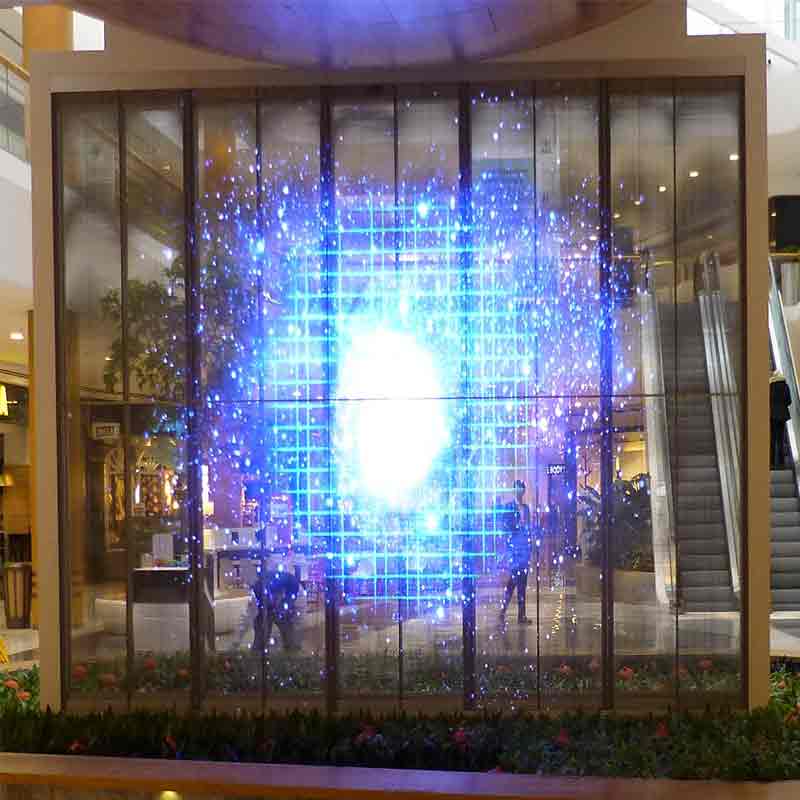
Limitations of Traditional LED Displays
Advantages of Transparent LED Displays
Types of Transparent Galss LED Screens
Glass LED Screens
Glass LED Screens are seamlessly integrated into glass panels, making them perfect for architectural settings like store windows, building facades, and other see-through installations. They deliver sharp visuals without compromising the natural light or view, enhancing modern designs effortlessly.
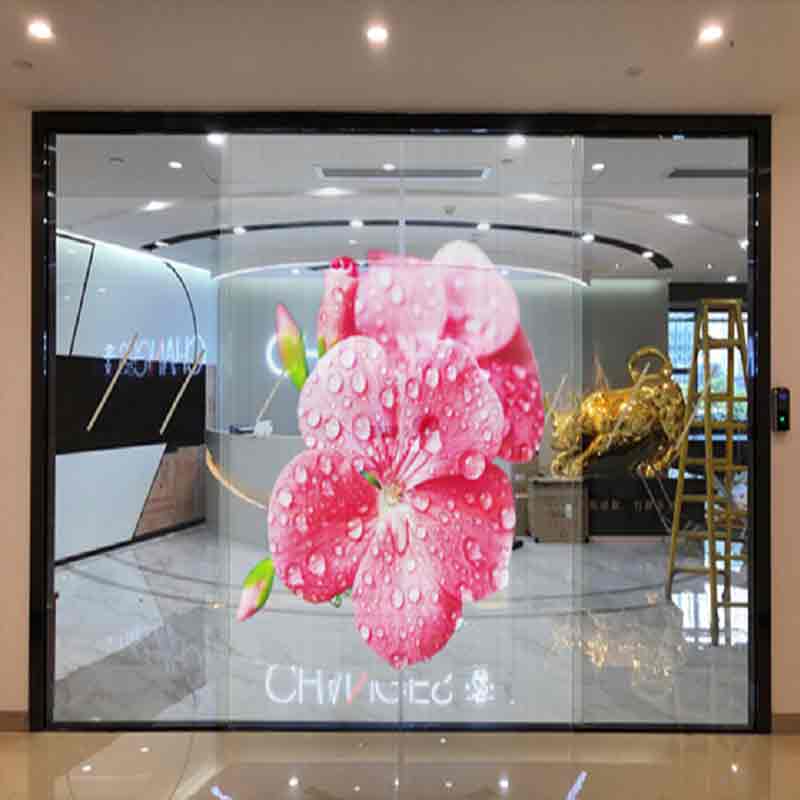
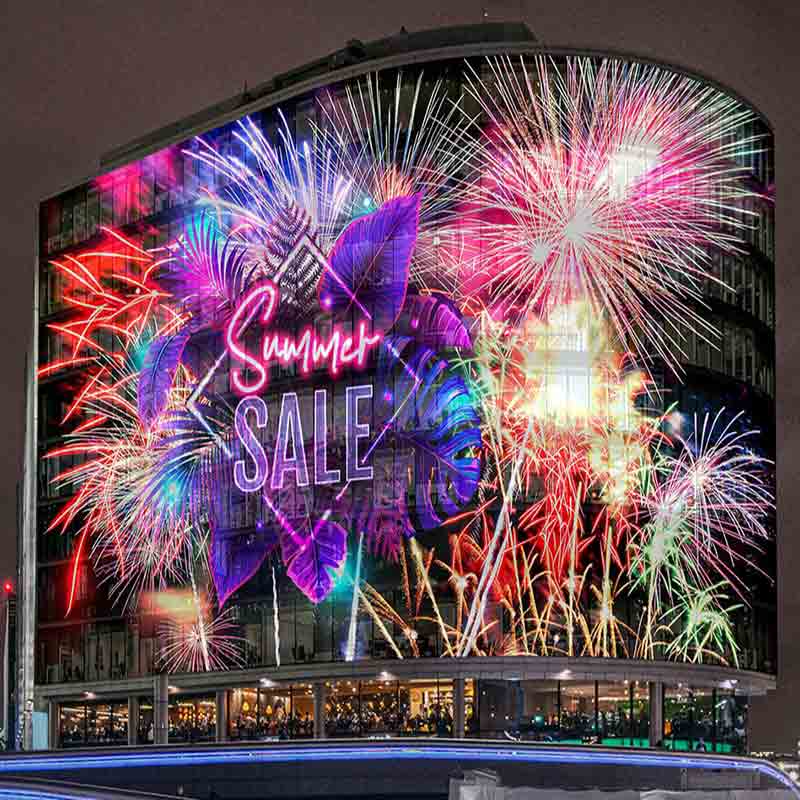
Mesh LED Screens
Mesh LED Screens are made with a net-like structure, offering a lightweight and flexible option for large outdoor displays. They are designed to let air and light flow through, making them ideal for high-rise buildings and locations where wind resistance is important.
Curtain LED Screens
Curtain LED Screens are composed of slim LED strips, providing a see-through effect that is perfect for stages, concerts, and other live events. They are easy to set up and provide dynamic, transparent visuals that add depth and dimension to any performance space.
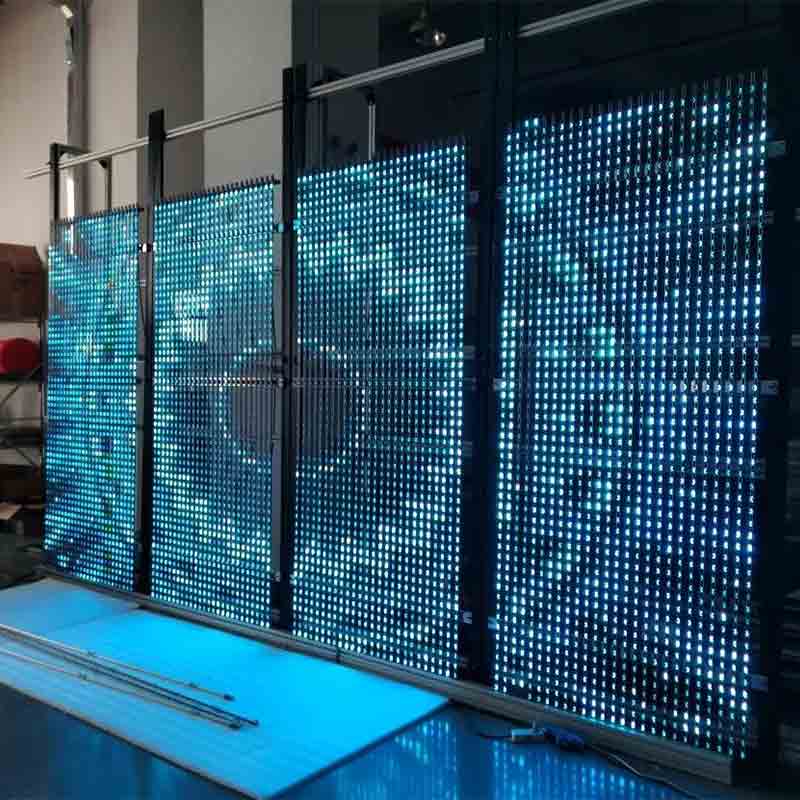
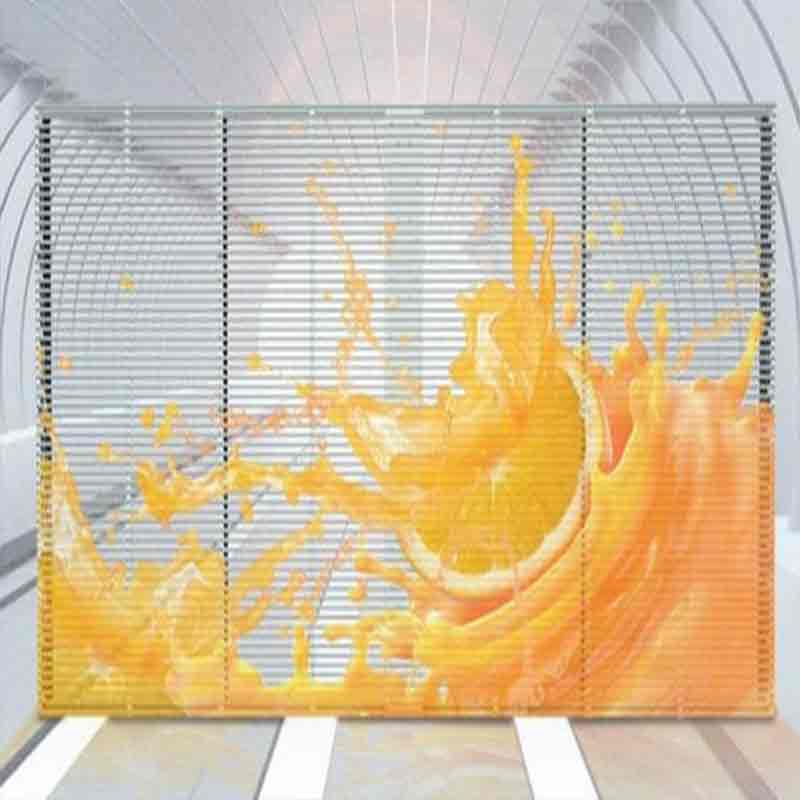
Film LED Screens
Film LED Screens are ultra-thin and adhesive, allowing them to be directly applied to glass surfaces. They transform windows and partitions into vibrant digital displays, making them ideal for retail and office environments that need dynamic signage without complex installations.
Fixed Transparent LED Screens
Fixed Transparent LED Screens are designed for permanent installations in spaces like museums, corporate lobbies, and retail environments. They offer consistent performance and blend seamlessly with the existing design of the space, providing a high-quality visual experience.
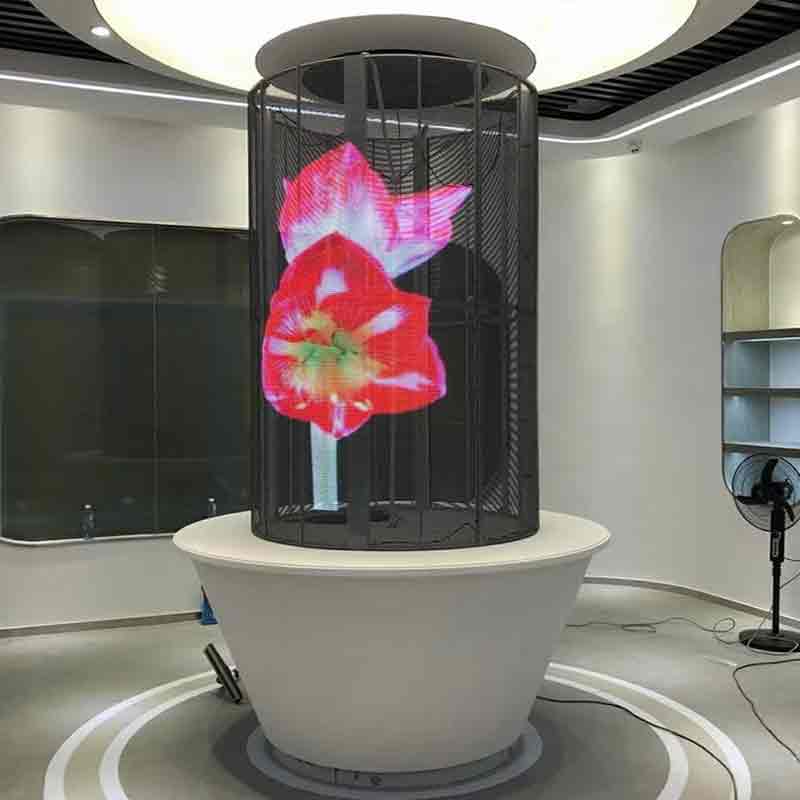
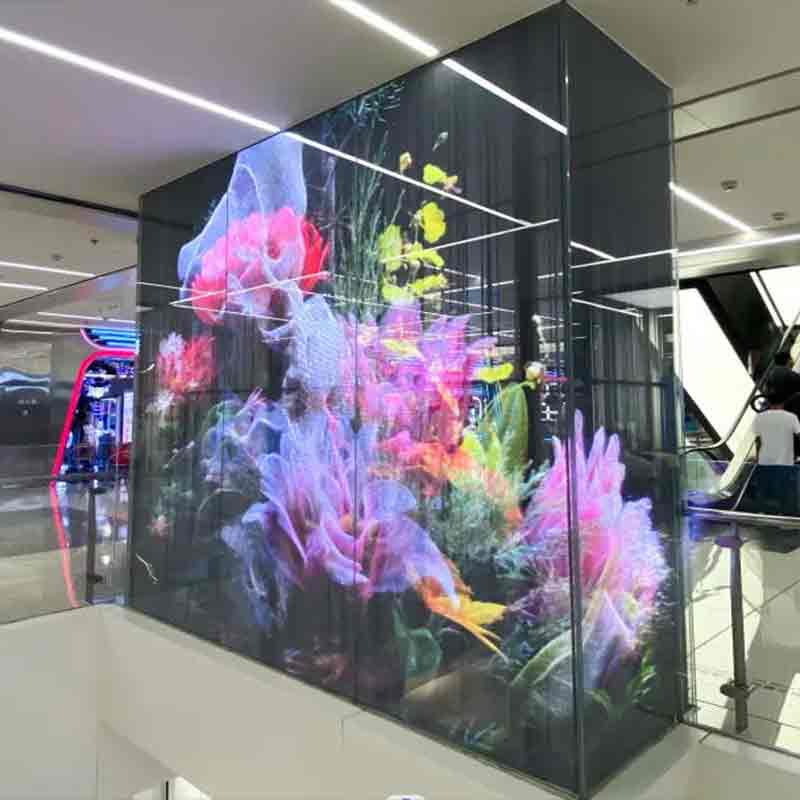
Portable Transparent LED Screens
Portable Transparent LED Screens are designed for mobility, making them ideal for temporary installations like trade shows, events, and pop-up shops. They combine high-quality visuals with the convenience of easy transport and setup, making them perfect for on-the-go display needs.
Key Features of Transparent LED Screens
Transparent LED screens offer a range of features that make them a superior choice for various applications, from retail and architecture to events and exhibitions. These advanced displays combine high transparency with exceptional visual quality, making them a versatile and efficient solution.
Exceptional Transparency
Transparent LED screens can achieve up to 85% transparency, allowing light to pass through and maintaining the view behind the screen. This feature is particularly useful in architectural settings where preserving natural light and visibility is crucial.
High Brightness and Clear Images
These screens deliver high brightness (up to 6000 Nits) and clear images, ensuring that content is visible even in bright outdoor conditions. The high resolution and vibrant colors enhance the overall visual experience.
Simple Maintenance
Transparent LED screens are designed for easy maintenance. Modular panels allow for quick and simple repairs, and the screens are generally more durable and less prone to issues compared to traditional LED displays.
Slim and Lightweight Design
With a thin and lightweight structure, these screens are easy to install and require minimal support infrastructure. Their ultra-thin design (often as thin as 40mm) makes them ideal for a variety of settings, from retail stores to corporate lobbies.
Customizable Sizes and Shapes
Transparent LED screens can be customized to fit specific dimensions and shapes, making them adaptable. Whether you need a standard rectangular screen or a custom shape, they can be tailored to meet your needs.
Versatile Content Integration
These screens support a wide range of content, from static images to dynamic videos. Advanced content management systems enable easy updates and customization, making it simple to switch between different messages and visuals.
Energy Efficiency
Transparent LED screens are more energy-efficient compared to traditional LED displays. They consume less power, which significantly reduces energy costs and minimizes the environmental impact, making them a sustainable choice.
Enhanced Viewing Experience
The combination of high transparency and vibrant visuals provides an enhanced viewing experience. The screens can be viewed from both sides, creating a dual-sided effect that adds depth and dimension to the content.
Durable and Reliable
Transparent LED screens are built to last, with high-quality materials and robust construction. They are resistant to environmental factors such as water, dust, and UV light, ensuring long-term performance and reliability.
How Transparent LED Screens Work
Embedded LED Strips
Embedded LED Strips are the core components of transparent LED screens. These strips consist of individual LEDs arranged in a grid pattern, embedded within a transparent substrate such as glass or film. Each LED is designed to emit light while allowing a significant amount of ambient light to pass through, maintaining the screen's transparency. The LED strips are connected to a control system that manages the intensity and color of the emitted light, ensuring high-quality visual output.
Pixel Spacing and Light Management
Pixel Spacing and Light Management are critical factors in achieving the desired transparency and visual clarity. The pixel spacing, also known as pixel pitch, determines the distance between adjacent LEDs. A smaller pixel pitch results in higher resolution and better image quality but may slightly reduce transparency. Advanced light management techniques, such as diffusers and optical films, are used to evenly distribute light and minimize glare, ensuring that the content is clear and visible from various angles.
Dynamic Content Control
Dynamic Content Control allows for the seamless display of high-quality, dynamic content on transparent LED screens. Content management systems (CMS) are used to upload, schedule, and manage the content displayed on the screen. These systems support a wide range of file formats, including images, videos, and animations. Real-time updates and remote control capabilities ensure that the content can be easily modified and optimized for different scenarios, such as live events, advertising, and information displays.
Dual-Sided Viewing Capability
Dual-Sided Viewing Capability is a unique feature of transparent LED screens. These screens can be viewed from both the front and the back, providing a two-way visual experience. This capability is particularly useful in retail environments, where the same content can be seen by customers inside and outside the store. The dual-sided viewing ensures that the message is effectively communicated to a wider audience, enhancing engagement and visibility.
Brightness and Power Efficiency
Brightness and Power Efficiency are essential considerations in the design of transparent LED screens. These screens are engineered to achieve high brightness levels (up to 6000 Nits) while consuming less power compared to traditional LED displays. High-efficiency LEDs and advanced power management systems ensure that the screens operate at optimal performance levels, reducing energy costs and minimizing the environmental impact. Additionally, the screens are designed to maintain consistent brightness across different lighting conditions, ensuring that the content remains clear and visible in both indoor and outdoor settings.
Comparison of Transparent and Opaque LED Screens
Transparent and opaque LED screens each have unique features and applications, making them suitable for different scenarios. Understanding the differences between these two types of screens can help in selecting the right technology for specific needs.
Transparency and Visual Design:
Applications and Use Cases:
Installation Requirements:
Brightness and Display Quality:
Maintenance:
Viewing Experience:
Factors Affecting Transparent LED Screen Prices
Indoor vs. Outdoor Applications:
Indoor Applications: Indoor transparent LED screens generally have lower costs due to less stringent requirements for environmental protection. They are designed to operate in controlled environments and may have lower brightness and durability specifications. Common indoor applications include retail stores, corporate lobbies, and museums, where the screens enhance the aesthetic appeal and provide dynamic content.
Outdoor Applications: Outdoor transparent LED screens are more expensive due to the need for higher brightness levels, weatherproofing, and enhanced durability. These screens must withstand harsh environmental conditions such as rain, wind, and extreme temperatures, ensuring they remain functional and visible in all weather scenarios. Common outdoor applications include architectural facades, public displays, and event spaces, where reliability is crucial.
Important Components:
LED Chips: The quality and type of LED chips used significantly affect the price. High-quality, high-brightness LEDs are more expensive but offer better performance and longer lifespan.
Control Systems: Advanced control systems, including content management software and real-time data integration, can increase the cost. These systems ensure smooth operation and high-quality content delivery.
Frame and Structure: The materials and design of the frame and structure can impact the price. Lightweight and durable materials are often more expensive but provide better performance and ease of installation.
Optical Films and Diffusers: These components are used to manage light distribution and enhance visual clarity. High-quality optical films and diffusers can add to the overall cost but improve the screen's performance.
Installation Costs:
Complexity of Installation: The complexity of the installation process can significantly affect the cost. Transparent LED screens that require custom mounting or specialized support structures will incur higher installation costs.
Labor Costs: The labor required for installation, including the expertise of the installation team, can vary. Professional installation by experienced technicians ensures proper setup and functionality but comes at a higher cost.
Location and Accessibility: The location and accessibility of the installation site can influence the cost. Installing screens in hard-to-reach areas or high-rise buildings may require additional equipment and safety measures, increasing the overall cost.
Maintenance and Longevity
Maintenance Requirements: Transparent LED screens generally require minimal maintenance due to their simple and lightweight design. However, regular cleaning and inspection are necessary to ensure optimal performance and longevity. Modular panels allow for easy repair and replacement, reducing downtime and maintenance costs, which enhances overall efficiency.
Longevity: The lifespan of transparent LED screens can vary based on the quality of components and the operating environment. High-quality screens with robust materials and advanced cooling systems can last longer, reducing the need for frequent replacements and lowering the total cost of ownership, making them a cost-effective investment.
How to Choose the Right Transparent LED Display
Choosing the right transparent LED screen involves considering several key factors to ensure it meets your specific needs and provides optimal performance. Here are some important aspects to consider:
1. Transparency and Pixel Pitch:
Transparency: The level of transparency is crucial for maintaining the view through the screen. Higher transparency (up to 95%) allows more light to pass through, making it ideal for applications where the background is an integral part of the visual experience.
Pixel Pitch: The pixel pitch, or the distance between adjacent pixels, affects the resolution and clarity of the displayed content. Smaller pixel pitches (e.g., 2.5mm to 5mm) provide higher resolution and are suitable for close viewing distances, while larger pixel pitches (e.g., 10mm to 20mm) are better for longer viewing distances.
2. Protection Capabilities:
Weatherproofing: For outdoor applications, the screen should be rated for IP65 or higher to protect against dust, water, and other environmental factors.
Impact Resistance: Screens should be designed to withstand physical impacts, especially in high-traffic areas or environments with potential for accidental damage.
UV and Temperature Resistance: Materials and components should be UV-resistant and able to operate efficiently in a wide range of temperatures to ensure long-term reliability.
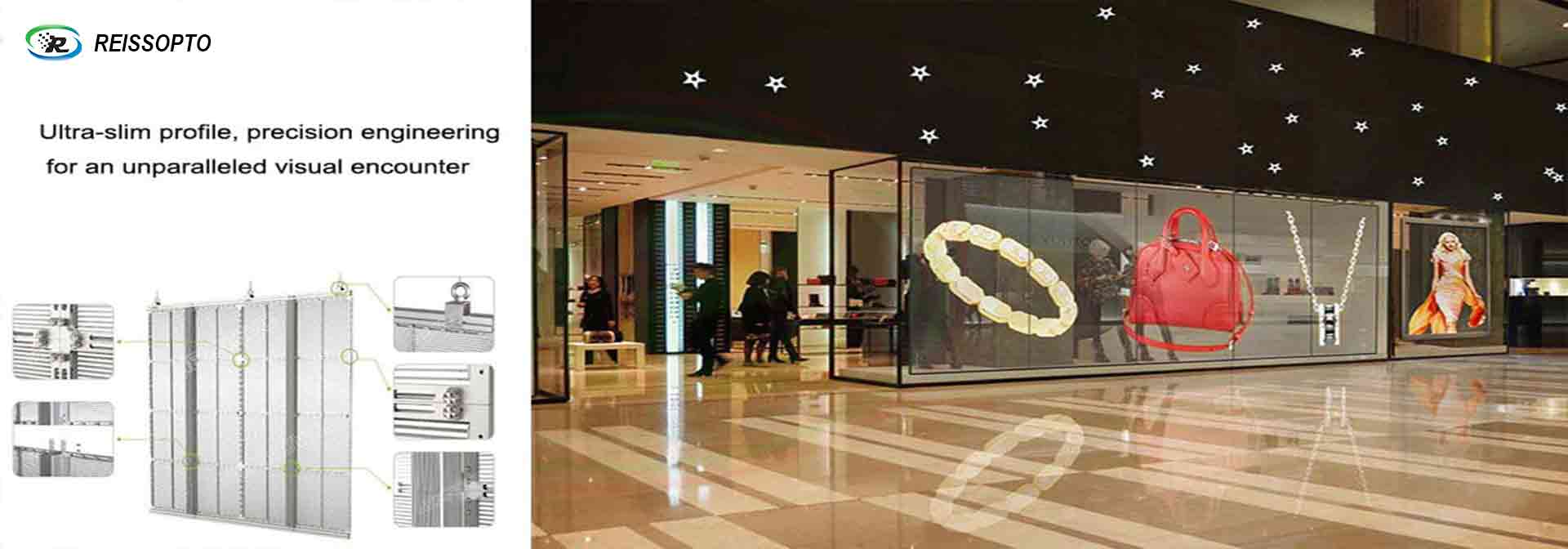
3. Noise Reduction Technology:
Low Noise Operation: Transparent LED screens should operate with minimal noise, especially in quiet environments like corporate lobbies or museums. Look for screens with advanced noise reduction technology to ensure a quiet and comfortable user experience.
Cooling Systems: Efficient cooling systems can reduce noise and heat generation, contributing to a quieter and more stable performance.
4. Heat Dissipation:
Thermal Management: Effective heat dissipation is crucial for maintaining the performance and longevity of the screen. Look for screens with advanced thermal management systems, such as heat sinks and active cooling solutions.
Material Selection: High-quality materials that conduct heat efficiently can help in reducing the overall temperature of the screen, extending its lifespan and reliability.
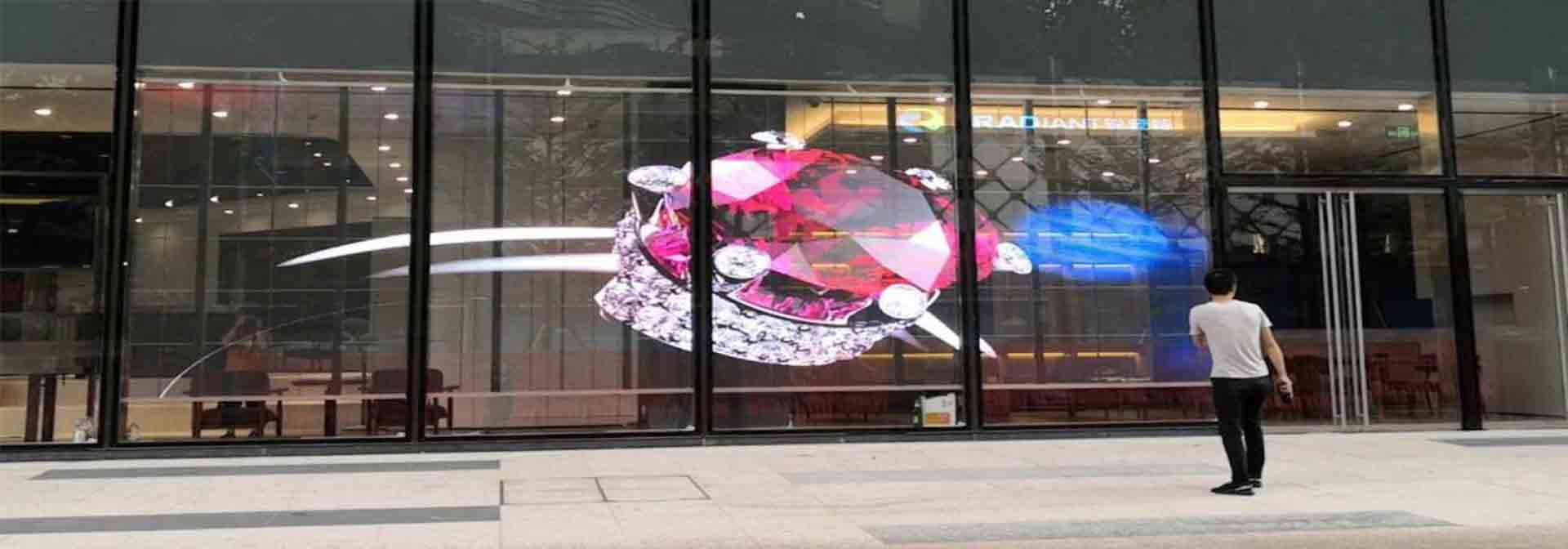
5. Reliable Suppliers:
Reputation and Experience: Choose suppliers with a strong reputation and extensive experience in the industry. Look for reviews and testimonials from previous customers to gauge their reliability and service quality.
Support and Warranty: Ensure the supplier offers comprehensive support, including installation assistance, maintenance services, and a generous warranty period. A reliable supplier will stand behind their product and provide ongoing support.
6. Suitable Space:
Size and Layout: Consider the available space and layout of the installation area. Ensure the screen fits comfortably and does not obstruct other elements or views.
Mounting Options: Check the available mounting options, such as wall mounts, ceiling mounts, or custom installations. The screen should be easy to install and secure in place.
Environmental Conditions: Assess the environmental conditions of the installation area, including lighting, temperature, and humidity, to ensure the screen can operate effectively.
7. Design Style:
Aesthetic Integration: The screen should complement the overall design and aesthetic of the space. Consider the color, shape, and frame design to ensure it blends seamlessly with the environment.
Customization Options: Some suppliers offer customization options, such as different frame colors and sizes, to meet specific design requirements.
User Interface: A user-friendly interface and control system can enhance the overall user experience, making it easier to manage and update the content displayed on the screen.
Installation Methods for Transparent LED Walls
Choosing the right installation method for your transparent LED wall is crucial to ensure optimal visibility, safety, and longevity. Different installation methods cater to various environments and aesthetic requirements. Here are some common installation methods for transparent LED walls:
Transparent LED Wall-Mounted Installation
Wall-Mounted Installation:
- Description: Wall-mounted installation involves attaching the transparent LED wall directly to a wall. This method is ideal for indoor applications such as retail stores, corporate lobbies, and museums.
- Advantages:
- Space Efficiency: Saves floor space and provides a clean, integrated look.
- Easy Access: Facilitates easy access for maintenance and cleaning.
- Aesthetic Appeal: Can be seamlessly integrated into the existing architecture.
- Considerations: Ensure the wall can support the weight of the LED wall and that the mounting hardware is securely installed.
Transparent LED WALL Hanging Installation
Hanging Installation:
- Description: Hanging installation involves suspending the transparent LED wall from the ceiling or a structural beam. This method is suitable for both indoor and outdoor applications, such as event spaces, shopping malls, and public displays.
- Advantages:
- Versatility: Can be used in areas with limited wall space.
- Visibility: Provides excellent visibility from multiple angles.
- Aesthetic Flexibility: Adds a modern and dynamic look to the space.
- Considerations: Ensure the ceiling or structural beam can safely support the weight of the LED wall and that the suspension system is properly designed and installed.
Fixed Stacked Installation
Fixed Stacked Installation:
- Description: Fixed stacked installation involves stacking multiple transparent LED panels on top of each other to create a larger display. This method is commonly used for large-scale displays in stadiums, concert venues, and public squares.
- Advantages:
- Scalability: Allows for creating large, high-resolution displays.
- Modularity: Panels can be easily added or removed for maintenance or expansion.
- Stability: Provides a stable and secure display structure.
- Considerations: Ensure the ground or support structure can handle the weight and that the panels are aligned correctly for a seamless display.
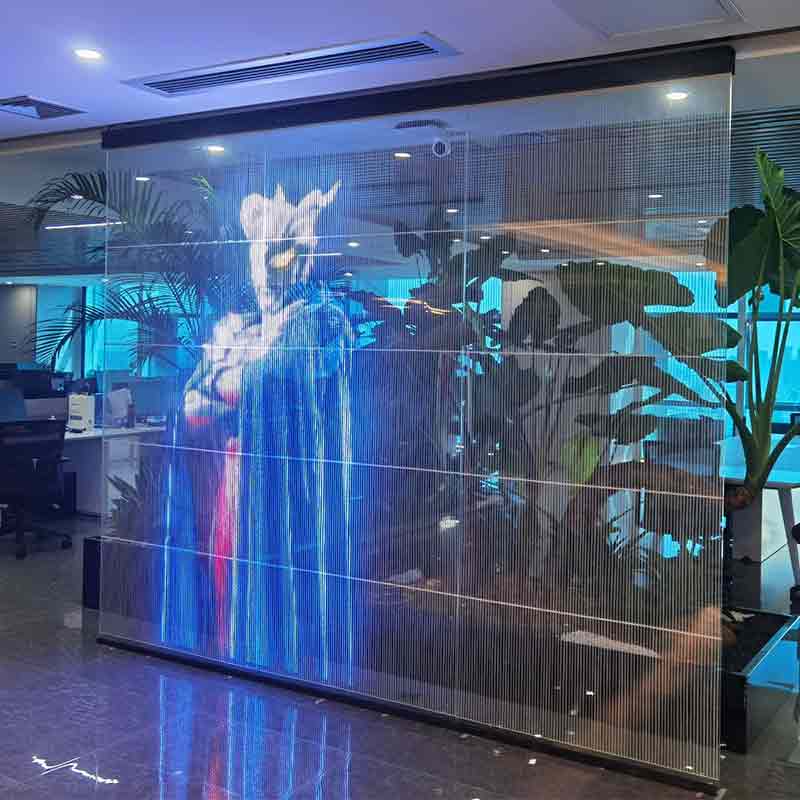
Ceiling Installation
Ceiling Installation:
- Description: Ceiling installation involves mounting the transparent LED wall on the ceiling, often seen in high-end retail stores, airports, and exhibition halls.
- Advantages:
- Space Utilization: Maximizes floor space by utilizing overhead areas.
- Unique Aesthetics: Creates a visually striking and modern look.
- Unobstructed Views: Ensures clear visibility from all angles below.
- Considerations: Ensure the ceiling can support the weight of the LED wall and that the mounting hardware is securely installed. Proper ventilation and access for maintenance should also be considered.
Setting up and maintaining transparent LED screens correctly is essential to ensure their optimal performance, longevity, and visual impact. Here are some best practices to follow:
Inspect LED Modules:
- Routine Checks: Regularly inspect the LED modules for any signs of damage, such as dead pixels or flickering. Address any issues promptly to prevent further damage.
- Replacement: Replace faulty modules immediately to maintain the overall performance and appearance of the screen.
Control Temperature and Humidity:
- Operating Range: Maintain the operating environment within the recommended temperature and humidity range specified by the manufacturer. Extreme conditions can affect the performance and lifespan of the LED screen.
- Cooling Systems: Use efficient cooling systems, such as fans or air conditioning, to keep the screen within the optimal temperature range and prevent overheating.
Ensure Secure Installation:
- Structural Integrity: Verify that the mounting surface or structure can support the weight and size of the LED screen. Use high-quality mounting hardware and follow the manufacturer’s installation guidelines.
- Professional Installation: Hire professionals for installation to ensure safety and alignment. Proper installation minimizes damage and ensures stability.
Applications of flexible transparent led screen
Retail Store Displays:
- Enhanced Visual Experience: Transparent LED screens can be used as dynamic displays in retail stores to showcase products, promotions, and advertisements. They create an engaging and interactive shopping experience.
- Product Information: Display detailed product information, pricing, and special offers directly on the screen, enhancing customer engagement and driving sales.
- Aesthetic Integration: These screens can be seamlessly integrated into store designs, providing a modern and high-tech look that attracts customers.
Stage Displays:
- Concerts and Performances: Transparent LED screens are widely used in concerts, music festivals, and live performances to create stunning visual effects and enhance the overall stage design.
- Background Projections: These screens can be used to project background visuals, animations, and real-time footage, adding depth and dimension to the performance.
- Flexibility: Stage displays can be customized to fit various stage sizes and configurations, offering flexibility for different types of events.
Building Exteriors:
- Architectural Integration: Transparent LED screens can be installed on building exteriors, blending seamlessly with the architecture while providing a platform for dynamic content.
- Advertising and Branding: Use these screens for advertising, branding, and promoting events. They can display high-resolution images, videos, and text, making them highly effective for outdoor marketing.
- Nighttime Visibility: The screens are particularly effective at night, providing bright and clear visuals that attract attention and enhance the building's appearance.
Curtain Displays:
- Dynamic Backdrops: Transparent LED screens can be used as curtain displays in theaters, concert venues, and event spaces. They serve as dynamic backdrops that enhance the visual impact of performances and presentations.
- Interactive Elements: These screens can display interactive content, such as real-time graphics, animations, and video, creating a more immersive and engaging experience for the audience.
- Versatility: Curtain displays can be easily moved and repositioned, making them highly versatile for different events and setups.
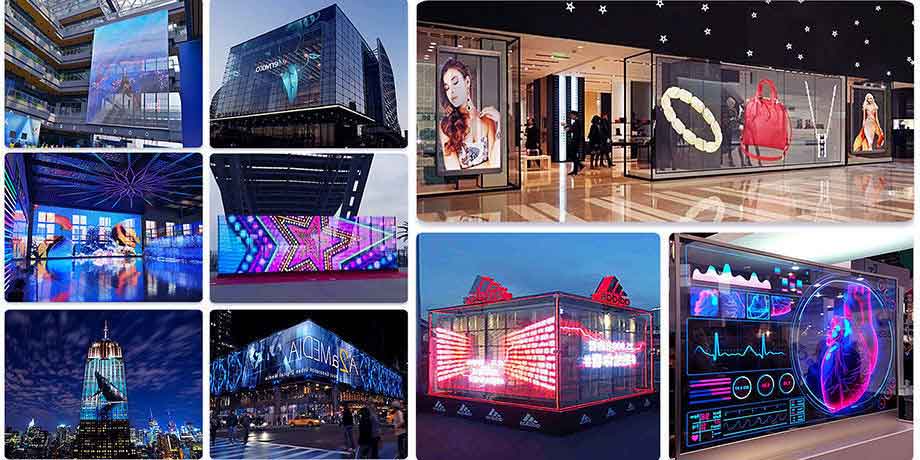
Exhibitions:
- Interactive Exhibits: Transparent LED screens can be used in exhibitions to create interactive exhibits that engage visitors. They can display information, videos, and interactive content, making the exhibits more informative and engaging.
- Wayfinding and Information: Use these screens to provide wayfinding information, schedules, and other important details, helping visitors navigate the exhibition space.
- Brand Promotion: Exhibitors can use transparent LED screens to promote their brands and products, creating a memorable and impactful presence at the event.
Chain Stores:
- Consistent Branding: Transparent LED screens can be used across multiple chain store locations to maintain consistent branding and messaging. This helps in reinforcing the brand identity and creating a uniform customer experience.
- Centralized Content Management: Centralized systems allow chain stores to update and manage screen content, ensuring up-to-date promotions and information.
- Attractive Promotions: Use these screens to display attractive promotions, new product launches, and special offers, driving foot traffic and increasing sales.
Science and Technology Museums:
- Educational Content: Transparent LED screens can be used to display educational content, such as interactive exhibits, scientific demonstrations, and historical information. They provide a visually engaging way to educate visitors.
- Interactive Exhibits: These screens can be integrated into interactive exhibits, allowing visitors to explore and learn through touch and interaction.
- Modern Aesthetics: The sleek and modern design of transparent LED screens enhances the overall aesthetic of the museum, creating a high-tech and futuristic environment.
Corporate Lobbies and Reception Areas:
- Professional Image: Transparent LED screens can be used in corporate lobbies and reception areas to create a professional and modern image. They can display company information, news, and welcome messages.
- Visitor Engagement: Use these screens to provide visitors with important information, such as meeting schedules, directions, and company updates, enhancing their experience.
- Branding and Marketing: These screens can showcase company achievements, client testimonials, and promotional content, reinforcing the company's brand and values.
Video Introduction
FAQ
Transparent LED screens are widely used in retail store displays, stage backdrops, building exteriors, exhibitions, chain stores, science and technology museums, and more.
Transparent LED screens offer high transparency, slim design, easy installation and maintenance, and energy efficiency.
When choosing the pixel pitch, consider the viewing distance. Smaller pitches (e.g., 2.5mm to 5mm) are ideal for close viewing, while larger pitches (e.g., 10mm to 20mm) are better for longer distances.
The lifespan of a transparent LED screen is typically 50,000 to 100,000 hours, depending on usage frequency and maintenance.
The installation steps for transparent LED screens include measuring dimensions, fixing the frame, installing modules, connecting power and signal cables, and testing and debugging.
Maintenance for transparent LED screens includes regular cleaning, inspecting LED modules, updating software, and controlling temperature and humidity.
Some transparent LED walls are waterproof and suitable for outdoor use, but it's important to choose models with waterproof features.

